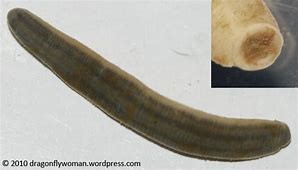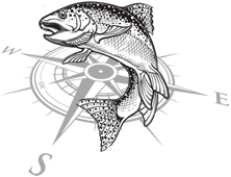Leaches

Leaches are one of those aquatic anomalies that slip under the radar of many fly anglers but are an important food source for trout that live in rivers and lakes. I have been swimming in a few rivers and lakes where I have had to remove them from me so I know they live in rivers and lakes. As a young boy I used to dig the rivers and pull up river grasses looking for leaches to use as bait. Leaches helped me catch a lot of trout as a boy and have caught me lots of trout since.
Leaches are worm-like organisms and as most know they are blood suckers and will attach themselves to any creature they can draw blood from. In rivers they tend to be in the one to 2 inch range and in lakes and reservoirs will be larger. Leaches love to be in dark places in rivers and of course you will find them all over in a lake or reservoir. Unlike other aquatic insects the leach doesn’t have multiple life cycles. Once a leach always a leach, they will not change form, just grow larger. Leaches are active throughout the season 12 months out of the year. Late fall and early spring when there are few if any hatches happening using a leach is a good bet. I do a lot of streamer fly fishing during these times and have found when using a plain rabbit strip fly in the 4 inch range can bring up exceptionally large trout.

By far the most common fly in the fly box of a lake or reservoir fly angler is the leach pattern. I would venture to say the common Brown Mohair Leach artificial fly catches more trout year in and year out in lakes and reservoirs throughout the North American Continent. In rivers, the most common way to fish a leach pattern is with floating line accompanied by a long leader. You can use sink tip fly lines if you wish but I find floating line easier to cast. In lakes and reservoirs if you want to be successful you will need a good type 3 sinking line. You will want to move your fly along the bottom of the lake where leaches live and a universal sinking line will move the length of the line down along the bottom. Whether it’s lakes or rivers you are going to be fishing, it pays to have a one or two artificial leach flies in your box. When all else fails don’t leave the river until you have run a leach through the riffles.

